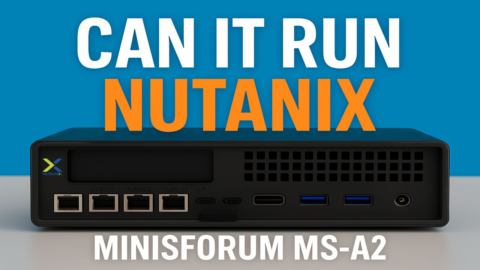In Part 17 of the Minisforum MS-A2 Ultimate #homelab Series, we put the Minisforum MS-A2 mini PC through its paces to see if it can handle Nutanix CE 2.1 (AHV).
This isn’t just a quick test — we go through the entire process of installing, configuring, and running Nutanix AHV on the MS-A2, step by step. If you’ve ever wondered whether a compact system can run enterprise-grade hyperconverged infrastructure, this video will show you how it’s done.
Here’s what you’ll learn and see in this deep dive:
Preparing the Installer: We boot the MS-A2, then use Rufus to create a USB ISO installer for Nutanix CE.
Kernel Panic Fix: Early in the boot we hit a kernel panic, but don’t worry — you’ll see how to fix it by disabling PSS support, and then boot Nutanix CE cleanly.
Installing Nutanix CE: Once the installer runs, we select hypervisor, CVM, and data devices, configure host and CVM IP addresses, set subnet/gateway, and accept the EULA.
First Boot & Cluster Setup: After rebooting, Nutanix AHV comes up. We SSH into the host and CVM, check VMs with virsh, and run the key cluster creation commands (full details on GitHub).
Cluster Status & Web Access: With the cluster online, we connect to Prism through the external IP, log in, change passwords, and link to the NEXT account.
Upgrades with LCM: Using Lifecycle Manager, we update the cluster to the latest AHV build, confirming the upgrade process works on the MS-A2.
Creating a VM: We upload ISOs (including Guest Tools), create a network subnet, and build our first VM on Nutanix AHV. You’ll see the MS-A2 handle a 4TB allocation (4096G) without issue.
Running Windows Server 2025: Finally, we boot a Windows Server 2025 ISO, walk through installation, and log in with our configured credentials — proving the MS-A2 can run Windows on top of Nutanix AHV.
By the end of this video, you’ll know exactly what to expect when running Nutanix CE 2.1 on the Minisforum MS-A2 — from install quirks and cluster setup to VM deployment.

![Validate my RSS feed [Valid RSS]](http://andysworld.org.uk/images/valid-rss.png)